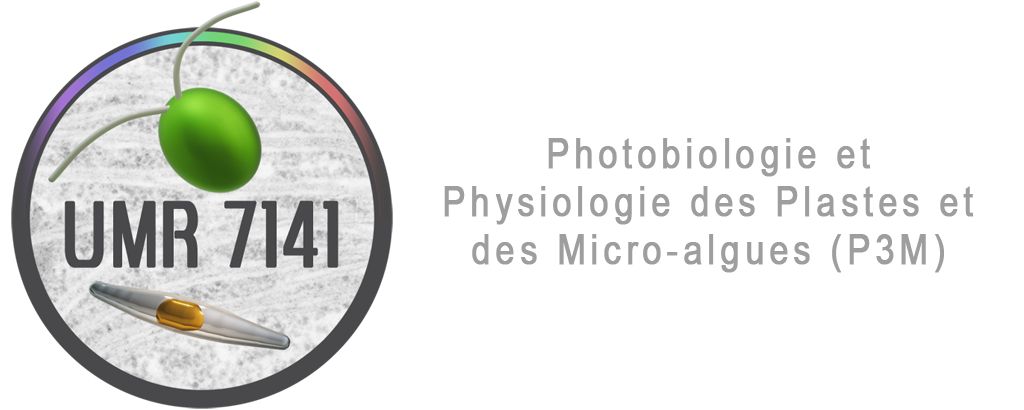Publications antérieures à 2019 –>
Autres publications (hors UMR7141) des membres du laboratoire –>
2025
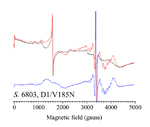
Boussac A, Sellés J, Sugiura M & Burnap R L
New insights into the involvement of residue D1/V185 in photosystem II function in Synechocystis 6803 and Thermosynechococcus vestitus - 2025 - BBA 1866(2):149550 - https://doi.org/10.1016/j.bbabio.2025.149550
The effects of D1-V185T and D1-V185N mutations in Photosystem II (PSII) from Thermosynechococcus vestitus (formerly T. elongatus) and Synechocystis 6803, respectively, were studied using both EPR and optical kinetics...

Lang J, König K, Venn B, Zeilfelder S, Ostermeier M, Spaniol B, Lara Spaniol L, Sommer F, Mustas M, Geimer S, Fürtges T, Brzezowski P, Zabret J, Wollman F-A, Nowacyzk M, Scheuring D, Rudack T, Mühlhaus T, Choquet Y, and Schroda M
Complexome profiling of the Chlamydomonas psb28 mutant reveals THYLAKOID ENRICHED FRACTION 5 as an early PS II assembly factor - 2025 - The Plant Cell, accepted. -
...
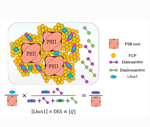
Croteau D, Jaubert M, Falciatore A and Bailleul B
Pennate diatoms make Non Photochemical Quenching as simple as possible but not simpler - 2025 - Nature Comms 16(1):2385 - https://doi.org/10.1038/s41467-025-57298-4
Studies of marine microalgal photosynthesis are heavily moulded on legacy research from organisms like Arabidopsis and Chlamydomonas, despite the differences between primary and secondary endosymbionts. ...
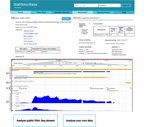
Villar E, Zweig N, Vincens P, Cruz de Carvalho H, Duchene C, Liu S, Monteil R, Dorrell R G, Fabris M, Vandepoele K, Bowler C, Falciatore A
DiatOmicBase: A Versatile Gene-Centered Platform for Mining Functional Omics Data in Diatom Research
- 2025 - Plant Journal 121(6):e70061 - https://doi.org/10.1101/2024.09.12.612655
Diatoms are prominent microalgae found in all aquatic environments. Over the last 20 years, thanks to the availability of genomic and genetic resources, ...
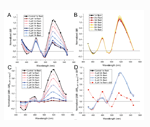
Wu GL, Tzeng SY, Bailleul B, Sellés J, Zhang YY, Fu HY
Atypical absorption response to the trans-thylakoid electric field in the acidothermophilic red algae Cyanidioschyzon merolae and Galdieria partita - 2025 - Biochim Biophys Acta Bioenerg. 1866(2):149544 - https://doi.org/10.1016/j.bbabio.2025.149544
An absorption change responding to the change in the trans-thylakoid electric field (Δψ), also known as the electrochromic shift (ECS) signal, is widely used to probe multiple photosynthetic processes...

Lahlou A, Orlando M, Bujaldon S, Gaultier W, Israelievitch E, Hanappe P, Le Saux T, Jullien L, Colliaux D, Bailleul B
Interplay between high-energy quenching and state transitions in Chlamydomonas reinhardtii: a single-cell approach - 2025 - bioRxiv - https://doi.org/10.1101/2025.01.23.633867
Studying cell-to-cell heterogeneity is essential to understand how unicellular organisms respond to stresses. Here, we combine single-cell measurements of chlorophyll a fluorescence with machine learning to study light stress responses in the model green alga Chlamydomonas reinhardtii...
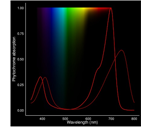
Duchêne C., Bouly J-P, Pierella Karlusich J.J., Sellés J., Bailleul B., Bowler C., Ribera d’Alcalà M, Falciatore A., Jaubert M.
Diatom Phytochromes Integrate the Underwater Light Spectrum to Sense Depth
- 2025 - Nature, 637(8046):691–697
- https://doi.org/10.1038/s41586-024-08301-3
Aquatic life is strongly structured by the distribution of light, which, besides attenuation in intensity, exhibits a continuous change in the spectrum with depth. The extent to which these light changes are perceived by phytoplankton through photoreceptors is still inadequately known...
2024
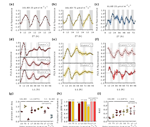
Manzotti A, Monteil R, Cheminant Navarro S, Croteau D, Charreton L, Hoguin A, Strumpen NF, Jallet D, Daboussi F, Kroth P, Bouget F-Y, Jaubert M, Bailleul B, Bouly J-P, Falciatore A
Circadian regulation of key physiological processes by the RITMO1 clock protein in the marine diatom Phaeodactylum tricornutum - 2024 - bioRxiv: 2024.2012.2023.629939 - https://doi.org/10.1101/2024.12.23.629939
Phasing biological and physiological processes to periodic light-dark cycles is crucial for the life of most organisms. Marine diatoms, as many phytoplanktonic species, exhibit biological rhythms, yet their molecular timekeepers remain largely uncharacterized...
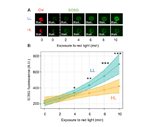
Levin, G.; Yasmin, M.; Liran, O.; Hanna, R.; Kleifeld, O.; Horev, G.; Wollman, F.-A.; Schuster, G. & Nawrocki, W. J.
Processes independent of nonphotochemical quenching protect a high-light-tolerant desert alga from oxidative stress - 2024 - Plant Physiology, 2024, kiae608 - https://doi.org/10.1093/plphys/kiae608
Non-photochemical quenching (NPQ) mechanisms are crucial for protecting photosynthesis from photoinhibition in plants, algae, and cyanobacteria, and their modulation is a long-standing goal for improving photosynthesis...
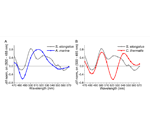
Sellés, J.; Alric, J.; Rutherford, A. W.; Davis, G. A. & Viola, S.
In vivo ElectroChromic Shift measurements of photosynthetic activity in far-red absorbing cyanobacteria - 2024 - Biochimica et Biophysica Acta (BBA) - Bioenergetics, 2024, 1865, 149502 - https://doi.org/10.1016/j.bbabio.2024.149502
Some cyanobacteria can do photosynthesis using not only visible but also far-red light that is unused by most other oxygenic photoautotrophs because of its lower energy content....

Dennu L, Devic M, Rigonato J, Falciatore A, Lozano J-C, Vergé V, Mariac C, Joli N, Jaillon O, Sabot F, Bouget F-Y
Biological and genomic resources for the cosmopolitan phytoplankton Bathycoccus: Insights into genetic diversity and major structural variations - 2024 - bioRxiv 2023.10.16.562038 -
Population-scale sequencing has become a standard practice to explore the natural genetic diversity underlying adaptation, notably in land plants. However, current sequencing initiatives for eukaryotic phytoplankton primarily concentrate on creating reference genomes...
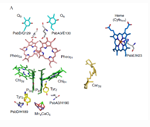
Boussac A, Sugiura M, Nakamura M, Nagao R, Noguchi T, Viola S, Rutherford AW, Sellés J
Absorption changes in Photosystem II in the Soret band region upon the formation of the chlorophyll cation radical [PD1PD2]+ - 2024 - Photosynth Res 162(2-3):211-223 - https://doi.org/10.1007/s11120-023-01049-3
Flash-induced absorption changes in the Soret region arising from the [PD1PD2]+ state, the chlorophyll cation radical formed upon light excitation of Photosystem II (PSII),...
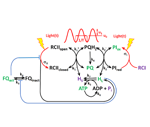
Fuente D, Orlando M, Bailleul B, Jullien L, Lazár D, Nedbal L.
A mathematical model to simulate the dynamics of photosynthetic light reactions under harmonically oscillating light - 2024 - Plant Physiol Biochem, 217, 109138 - https://doi.org/10.1016/j.plaphy.2024.109138
Alternating electric current and alternating electromagnetic fields revolutionized physics and engineering and led to many technologies that shape modern life. ...

Font-Muñoz J S, Jaubert M, Sourisseau M, Tuval I, Bailleul B, Duchêne C, Basterretxea G, Falciatore A
Phytochromes Enable Social Behavior in Marine Diatoms - 2024 - bioRxiv 2024.09.18.613651 - https://doi.org/10.1101/2024.09.18.613651
The phytochrome superfamily, a group of proteins that enable some organisms to detect changes in light intensity and quality, is widespread in terrestrial and marine microbes, fungi, algae, and plants. In terrestrial plants, these photosensory receptors monitor variations in the light environment by sensing red (R) and far-red (FR) regions of the spectrum and ...
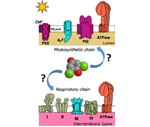
Romero, M. A.; Guille-Collignon, M.; Bailleul, B. & Lemaître, F.
Analytical fingerprint of the interactions between quinones and bioenergetic membranes in Chlamydomonas reinhardtii - 2024 - Electrochimica Acta 497: 144597 - https://doi.org/10.1016/j.electacta.2024.144597
The use of intact photosynthetic organisms (e.g. microalgae or cyanobacteria) for biotechnological approaches is a promising avenue to extract sustainable energy from oxygenic photosynthesis...

Eisenmann I, L'Homme A, Lahlou A, Bujaldon S, Le Saux T, Bailleul B, Desprat N and Jeanneret R
Light-induced phase separation with finite wavelength selection in photophobic micro-algae - 2024 - arXiv:2401.08394 - https://arxiv.org/abs/2401.08394
As for many motile micro-algae, the freshwater species Chlamydomonas reinhardtii can detect light sources and adapt its motile behavior in response. Here, we show that suspensions of photophobic cells can be unstable to density fluctuations,...
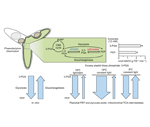
Dorrell RG, Zhang Y, Liang Y, Gueguen N, Nonoyama T, Croteau D, Penot M, Adiba S, Bailleul B, Gros V, Pierella Karlusich JJ, Zweig N, Fernie AR, Jouhet J, Maréchal E, Bowler C
Complementary environmental analysis and functional characterization of lower glycolysis-gluconeogenesis in the diatom plastid - 2024 - Plant Cell Online ahead of print - https://doi.org/10.1093/plcell/koae168
Organic carbon fixed in chloroplasts through the Calvin-Benson-Bassham Cycle can be diverted towards different metabolic fates, including cyoplasmic and mitochondrial respiration, gluconeogenesis,...
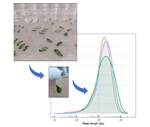
Chaux F, Agier N, Eberhard S, Xu Z
Extraction and selection of high-molecular weight DNA for long-read sequencing from Chlamydomonas reinhardtii - 2024 - PLoS ONE 19(2):1-6 - https://doi.org/10.1371/journal.pone.0297014
Recent advances in long-read sequencing technologies have enabled the complete assembly of eukaryotic genomes from telomere to telomere...
Chapitres dans des ouvrages 2024 :
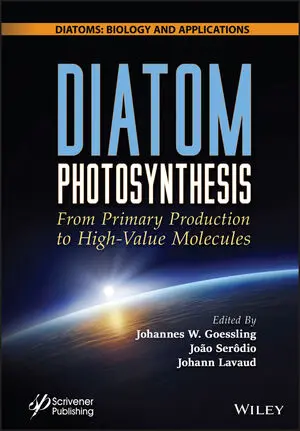 | Croteau, D., Jensen, E., Wilhelm, C. and Bailleul, B. (2024). Comparing Diatom Photosynthesis with the Green Lineage. In Diatom Photosynthesis (eds J.W. Goessling, J. Serôdio and J. Lavaud). https://doi.org/10.1002/9781119842156.ch1 |
 | Vaulot, D., Bilcke, G., Chaerle, P., Falciatore, A., Gourvil, P., Lomas, M.W., Probert, I. and Vyverman, W. (2024). Culturing Diatoms. In Diatom Photosynthesis (eds J.W. Goessling, J. Serôdio and J. Lavaud). https://doi.org/10.1002/9781119842156.ch14 |
2023
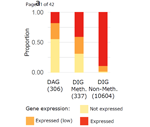
Grypioti E, Richard H, Kryovrysanaki N, Jaubert M, Falciatore A, Verret F, Kalantidis K
Dicer-dependent heterochromatic small RNAs in the model diatom species Phaeodactylum tricornutum - 2023 - New Phytol. - https://doi.org/10.1111/nph.19429
Diatoms are eukaryotic microalgae responsible for nearly half of the marine productivity. RNA interference (RNAi) is a mechanism of regulation of gene ...

Ben Brahim N, Touaiti S, Sellés J, Lambry JC, Negrerie M
The control of nitric oxide dynamics and interaction with substituted zinc-phthalocyanines - 2023 - The Royal Society of Chemistry, 2024, 53, 772-780 - https://doi.org/10.1039/D3DT03356B
Phthalocyanines are artificial macrocycles that can harbour a central metal atom with four symmetric coordinations. Similar to metal-porphyrins, metal-phthalocyanines (M-PCs) may bind small molecules, especially diatomic gases such as NO and O2. ...
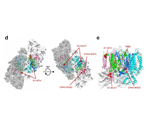
Kato Y, Kuroda H, Ozawa S-I, Saito K, Dogra V, Scholz M, Zhang G, de Vitry C, Ishikita H, Kim C, Hippler M, Takahashi Y and Sakamoto W
Characterization of Tryptophan Oxidation Affecting D1 Degradation by FtsH in the Photosystem II Quality Control of Chloroplasts - 2023 - eLife Sciences Publications - https://doi.org/10.7554/eLife.88822.2
Photosynthesis is one of the most important reactions for sustaining our environment. Photosystem II (PSII) is the initial site...
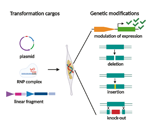
Russo M T, Rogato A, Jaubert M, Karas B J, Falciatore A
Phaeodactylum tricornutum: an established model species for diatom molecular research and an emerging chassis for algal synthetic biology - 2023 - Journal of Phycology 59(6):1114-1122 - https://doi.org/10.1111/jpy.13400
Diatoms are prominent and highly diverse microalgae in aquatic environments. Compared with other diatom species, Phaeodactylum tricornutum is an "atypical diatom" ...
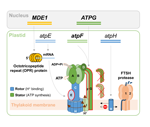
Chaux F, Jarrige D, Rodrigues-Azevedo M, Bujaldon S, Caspari O D, Ozawa SI, Drapier D, Vallon O, Choquet Y, de Vitry C
Chloroplast ATP synthase biogenesis requires peripheral stalk subunits AtpF and ATPG and stabilization of atpE mRNA by OPR protein MDE1 - 2023 - Plant J., 116(6):1582-1599 - https://doi.org/10.1111/tpj.16448
Chloroplast ATP synthase contains subunits of plastid and nuclear genetic origin. To investigate the coordinated biogenesis of this complex, we isolated novel ATP synthase mutants in the green alga Chlamydomonas reinhardtii by screening for high light sensitivity....

Sugiura M, Kimura M, Shimamoto N, Takegawa Y, Nakamura M, Koyama K, Sellés J, Boussac A, Rutherford AW.
Tuning of the ChlD1 and ChlD2 properties in photosystem II by site-directed mutagenesis of neighbouring amino acids - 2023 - BBA 1865(1):149013. - https://doi.org/10.1016/j.bbabio.2023.149013
Photosystem II is the water/plastoquinone photo-oxidoreductase of photosynthesis. The photochemistry and catalysis occur in a quasi-symmetrical heterodimer, D1D2, that evolved from a homodimeric ancestor. ...

Chaux F, Agier N, Garrido C, Fischer G, Eberhard S, Xu Z.
Telomerase-independent survival leads to a mosaic of complex subtelomere rearrangements in Chlamydomonas reinhardtii - 2023 - Genome Res. 33(9):1582-1598. - https://doi.org/10.1101/gr.278043.123
Telomeres and subtelomeres, the genomic regions located at chromosome extremities, are essential for genome stability in eukaryotes. In the absence of the canonical maintenance mechanism provided by telomerase,...

Thuillier S, Viola S, Lockett-Walters B, Nay B, Bailleul B, Baudouin E
Mode-of-action of the natural herbicide radulanin A as an inhibitor of photosystem II - 2023 - Pest Manag Sci. Epub ahead of print. - https://doi.org/10.1002/ps.7609
Radulanin A is a natural 2,5-dihydrobenzoxepin synthesized by several liverworts of the Radula genus. Breakthroughs in the total synthesis of radulanin A paved the way for the discovery of its phytotoxic activity....

Boussac A, Sellés J and Suigura M
Energetics and proton release in photosystem II from Thermosynechococcus elongatus with a D1 protein encoded by either the psbA2 or psbA3 gene - 2023 - BBA 1864(3) - https://doi.org/10.1016/j.bbabio.2023.148979
In the cyanobacterium Thermosynechococcus elongatus there are three psbA genes coding for the Photosystem II (PSII) D1 subunit that interacts with...

Miró-Vinyals B, Artigues M, Wostrikoff K, Monte E, Broto-Puig F, Leivar P, Planas A
Chloroplast engineering of the green microalgae Chlamydomonas reinhardtii for the production of HAA, the lipid moiety of rhamnolipid biosurfactants. - 2023 - N Biotechnol. - https://doi.org/10.1016/j.nbt.2023.03.005
Hydroxyalkanoyloxyalkanoates (HAA) are lipidic surfactants with a number of potential applications, but more remarkably, they are the biosynthetic precursors of rhamnolipids (RL), which are preferred biosurfactants thanks to their excellent physicochemical properties...
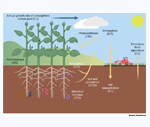
Hirt, Heribert et al.
PlantACT! – how to tackle the climate crisis - 2023 - Trends in plant science, S1360-1385(23)00024-9 - https://doi.org/10.1016/j.tplants.2023.01.005
Greenhouse gas (GHG) emissions have created a global climate crisis which requires immediate interventions to mitigate the negative effects on all aspects of life on this planet. ...
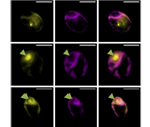
Caspari OD, Garrido C, Law CO, Choquet Y, Wollman FA, Lafontaine I
Converting antimicrobial into targeting peptides reveals key features governing protein import into mitochondria and chloroplasts - 2023 - Plant Commun. 4(4):100555. - https://doi.org/10.1016%2Fj.xplc.2023.100555
We asked what peptide features govern targeting to the mitochondria versus the chloroplast, using antimicrobial peptides as a starting point. This approach was inspired by the endosymbiotic hypothesis that organelle-targeting peptides derive ...
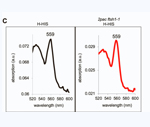
Calderon RH, de Vitry C, Wollman F-A, Niyogi KK
Rubredoxin 1 promotes the proper folding of D1 and is not required for heme b559 assembly in Chlamydomonas photosystem II - 2023 - J Biol Chem. 2023;102968 - https://doi.org/10.1016/j.jbc.2023.102968
Photosystem II (PSII), the water:plastoquinone oxidoreductase of oxygenic photosynthesis, contains a heme b559 iron whose axial ligands are provided by histidine residues from the α (PsbE) and β (PsbF) subunits. PSII assembly depends on accessory...
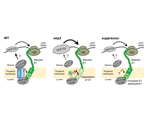
Wang F, Dischinger K, Westrich L D, Meindl I, Egidi F, Trosch R, Sommer F, Johnson X, Schroda M, Nickelsen J, Willmund F, Vallon O and Bohne A-V
ONE-HELIX PROTEIN 2 is not required for the synthesis of photosystem II subunit D1 in Chlamydomonas - 2023 - Plant Physiol 191(3):1612-1633 - https://doi.org/10.1093/plphys/kiad015
In land plants and cyanobacteria, co-translational association of chlorophyll (Chl) to the nascent D1 polypeptide, a reaction center protein of photosystem II (PSII), requires a Chl binding complex consisting of a short-chain dehydrogenase...
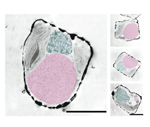
Joli N, Concia L, Mocaer K, Guterman J, Laude J, Guerin S, Sciandra T, Bruyant F, Ait-Mohamed O, Beguin M, Forget M-H, Bourbousse C, Lacour T, Bailleul B, Nef C, Savoie M, Tremblay J-E, Campbell D A, Lavaud J, Schwab Y, Babin M and Bowler C
Hypometabolism to survive the long polar night and subsequent successful return to light in the diatom Fragilariopsis cylindrus - 2023 - New Phytologist - https://doi.org/10.1111/nph.19387
Diatoms, the main eukaryotic phytoplankton of the polar marine regions, are essential for the maintenance of food chains specific to Arctic and Antarctic ecosystems...
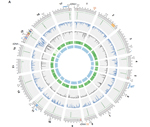
Craig RJ, Gallaher SD, Shu S, Salomé P, Jenkins JW, Blaby-Haas CE, Purvine SO, O'Donnell S, Barry K, Grimwood J, Strenkert D, Kropat J, Daum C, Yoshinaga Y, Goodstein DM, Vallon O, Schmutz J, Merchant SS
The Chlamydomonas Genome Project, version 6: reference assemblies for mating type plus and minus strains reveal extensive structural mutation in the laboratory - 2023 - Plant Cell. 2022 Dec 23:koac347 - https://doi.org/10.1093/plcell/koac347
Five versions of the Chlamydomonas reinhardtii reference genome have been produced over the last two decades. Here we present version 6, bringing significant advances in assembly quality and structural annotations....
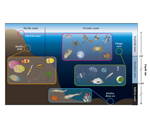
Häfker N S, Andreatta G, Manzotti A, Falciatore A, Raible F and Tessmar-Raible K
Rhythms and Clocks in Marine Organisms - 2022 - Annual Review of Marine Science 15:1, 509-538 - https://doi.org/10.1146/annurev-marine-030422-113038
The regular movements of waves and tides are obvious representations of the oceans’ rhythmicity. But the rhythms of marine life span across ecological niches and timescales, including short (in the range of hours) and long (in the range of days and months) periods. These rhythms regulate the physiology and behavior of individuals...
Ouvrages 2023 :
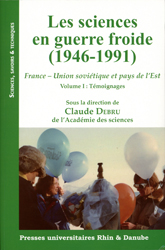 | Les sciences en guerre froide (1946-1991) : France – Union soviétique et pays de l’Est – Volume I : Témoignages. Sous la direction de Claude Debru – Presses universitaires Rhin & Danube – 2023. Pierre Joliot – Itinéraires de la physique nucléaire à la biologie dans le contexte de la guerre froide (p 83-88) L’auteur relate certains événements qui ont affecté la recherche française… Francis-André Wollman – Une perception de la guerre froide, de l’enfance à la maturité (p 223-237) Ce témoignage évoque la perception de la guerre froide par ceux qui sont nés dans la décennie qui a suivi la fin de la Deuxième Guerre mondiale… |
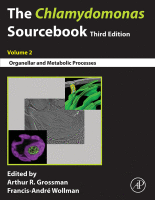 | The Chlamydomonas Sourcebook – Volume 2 : Organellar and Metabolic Processes Arthur R. Grossman, Francis-André Wollman (Eds.) 2023 | 3rd ed. 2023 Academic Press 978-0-12-821430-5 (ISBN) |
| Chapitres | |
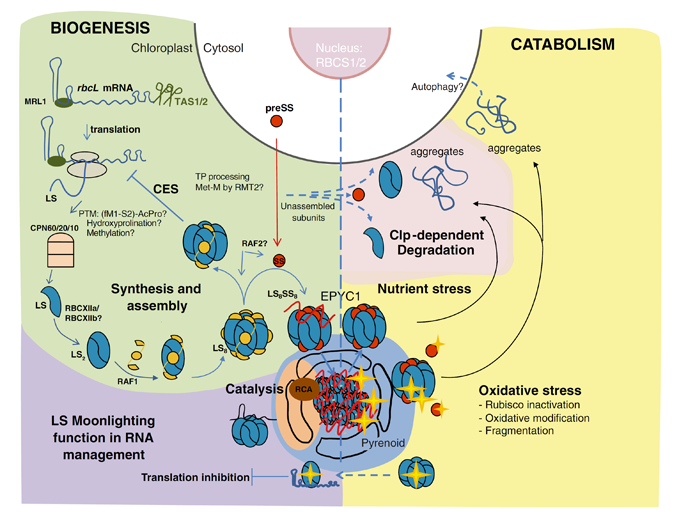 | Chapter 7 – Rubisco and inorganic carbon assimilation Wostrikoff K and Mackinder L C pp 223-271 |
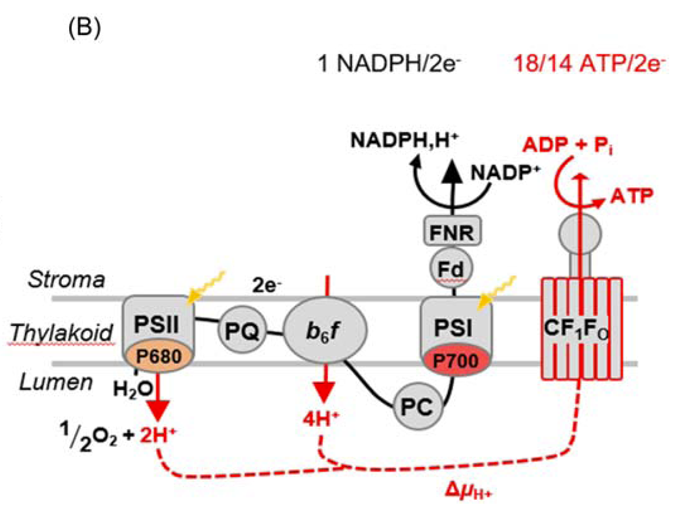 | Chapter 18 – The multiple routes of photosynthetic electron transfer in Chlamydomonas reinhardtii Croteau D, Alric J and Bailleul B pp 591-613 |
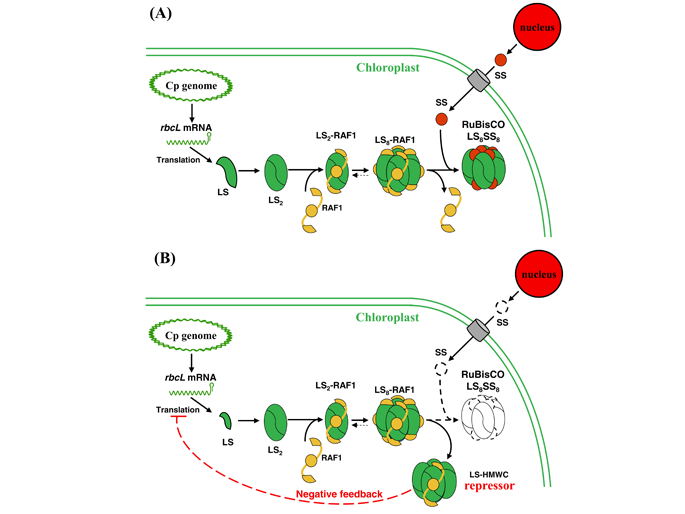 | Chapter 19 – The assembly of photosynthetic proteins Choquet Y and Wollman F-A pp 615-646 |
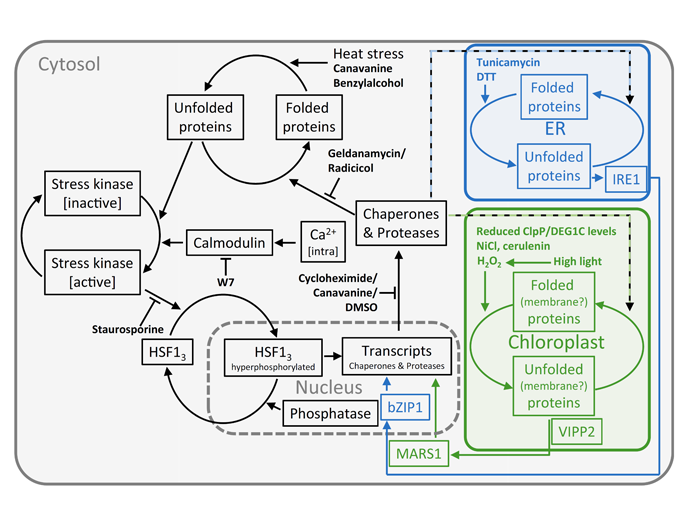 | Chapter 20 – Molecular chaperones, proteases, and unfolded protein responses Schroda M and de Vitry C pp 647-689 |
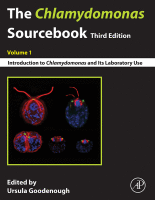 | The Chlamydomonas Sourcebook – Volume 1 : Introduction to Chlamydomonas and Its Laboratory Use Ursula Goodenough (Ed.) 2023 | 3rd ed. 2023 Academic Press 978-0-12-822457-1 (ISBN) |
| Chapitre | |
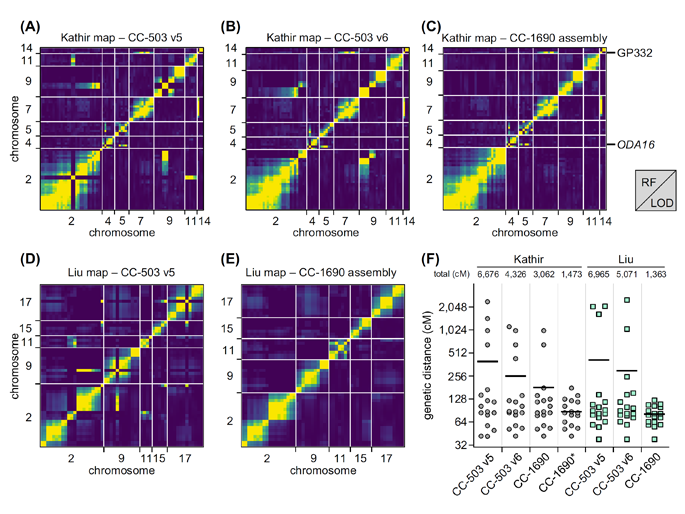 | Chapter 5 – The Chlamydomonas nuclear genome Craig R J and Vallon O pp 85-115 |
2022
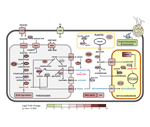
Lacroux J, Atteia A, Brugière S, Couté Y, Vallon O, Steyer JP, van Lis R
Proteomics unveil a central role for peroxisomes in butyrate assimilation of the heterotrophic Chlorophyte alga Polytomella sp - 2022 - Front Microbiol, 13:1029828 - https://doi.org/10.3389%2Ffmicb.2022.1029828
Volatile fatty acids found in effluents of the dark fermentation of biowastes can be used for mixotrophic growth of microalgae, improving productivity and reducing the cost of the feedstock...
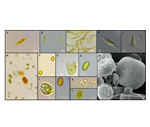
Falciatore A, Bailleul B, Boulouis A, Bouly J-P, Bujaldon S, Cheminant-Navarro S, Choquet Y, de Vitry C, Eberhard S, Jaubert M, Kuras R, Lafontaine I, Landier S, Selles J, Vallon O and Wostrikoff K
Light-driven processes: key players of the functional biodiversity in microalgae - 2022 - Comptes Rendus Biologies, Académie des sciences (Paris), 345(2):1-24. - https://doi.org/10.5802/crbiol.80
Microalgae are prominent aquatic organisms, responsible for about half of the photosynthetic activity on Earth. Over the past two decades, breakthroughs in genomics and ecosystem biology, as well as the development of genetic resources in model species,...
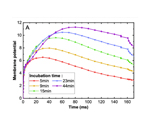
Joliot P, Sellés J, Wollman F-A, Verméglio A
High efficient cyclic electron flow and functional supercomplexes in Chlamydomonas cells - 2022 - BBA 1863(8):148909 - https://doi.org/10.1016/j.bbabio.2022.148909
A very high rate for cyclic electron flow (CEF) around PSI (~180 s−1 or 210 s−1 in minimum medium or in the presence of a carbon source respectively) is measured in the presence of methyl viologen (MV) in intact cells of Chlamydomonas reinhardtii under anaerobic conditions....
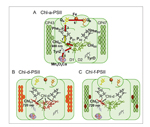
Viola S, Roseby W, Santabarbara S, Nürnberg D, Assunção R, Dau H, Sellés J, Boussac A, Fantuzzi A, Rutherford AW
Impact of energy limitations on function and resilience in long-wavelength photosystem II - 2022 - Elife 11:e79890 - https://doi.org/10.7554/elife.79890
Photosystem II (PSII) uses the energy from red light to split water and reduce quinone, an energy-demanding process based on chlorophyll a (Chl-a) photochemistry. Two types of cyanobacterial PSII can use chlorophyll d (Chl-d) and chlorophyll f (Chl-f) to perform the same reactions using lower energy, far-red light....
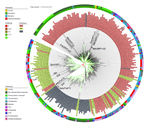
Garrido C, Wollman F-A, Lafontaine I
The Evolutionary History of Peptidases Involved in the Processing of Organelle-Targeting Peptides - 2022 - Genome Biol Evol 14(7):evac101 - https://doi.org/10.1093/gbe/evac101
Most of the proteins present in mitochondria and chloroplasts, the organelles acquired via endosymbiotic events, are encoded in the nucleus and translated into the cytosol. Most of such nuclear-encoded proteins are specifically recognized via an N-terminal-encoded targeting peptide (TP) and imported into the organelles via a translocon machinery...
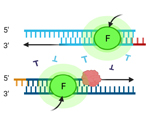
Rogato A and Falciatore A
Detection and Quantification of Small Noncoding RNAs in Marine Diatoms - 2022 - In: Verde C, Giordano D (eds) Marine Genomics. Methods in Molecular Biology, 2498: pp 315-326 - https://doi.org/10.1007/978-1-0716-2313-8_17
Endogenous small noncoding RNAs (sRNAs) are a large family of essential regulators of gene expression in both eukaryotes and prokaryotes. Various types of sRNAs with different size and mapping to different genome locations have been recently identified in diatoms,...
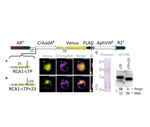
Oliver D. Caspari
Transit Peptides Often Require Downstream Unstructured Sequence for Efficient Chloroplast Import in Chlamydomonas reinhardtii - 2022 - Front. Plant Sci. 13 - https://doi.org/10.3389/fpls.2022.825797
The N-terminal sequence stretch that defines subcellular targeting for most nuclear encoded chloroplast proteins is usually considered identical to the sequence that is cleaved upon import. Yet here this study shows that for eight out of ten tested Chlamydomonas chloroplast transit peptides, ...
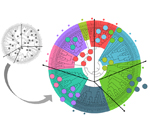
Vicedomini R, Bouly J-P, Laine E, Falciatore A, Carbone A
Multiple profile models extract features from protein sequence data and resolve functional diversity of very different protein families - 2022 - Mol Biol Evol. 39(4):msac070 - https://doi.org/10.1093/molbev/msac070
Functional classification of proteins from sequences alone has become a critical bottleneck in understanding the myriad of protein sequences that accumulate in our databases. The great diversity of homologous sequences hides,...
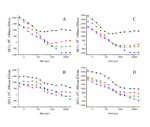
Boussac A, Sugiura M, Sellés J
Probing the proton release by Photosystem II in the S1 to S2 high-spin transition - 2022 - BBA 1863(5):148546. - https://doi.org/10.1016/j.bbabio.2022.148546
The stoichiometry and kinetics of the proton release were investigated during each transition of the S-state cycle in Photosystem II (PSII) from Thermosynechococcus elongatus containing either a Mn4CaO5 (PSII/Ca) or a Mn4SrO5 (PSII/Sr) cluster...
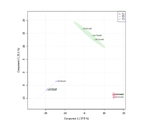
Ternon E, Pavaux A-S, Peltekis A, Gemin M-P, Jauzein C, Bailleul B, Lemée R and Thomas O P
Assessment of the allelochemical activity of Ostreopsis cf. ovata and the ovatoxins towards competitive benthic microalgae - 2022 - Aquat Ecol 56:475-491 - https://doi.org/10.1007/s10452-022-09953-x
Recurrent blooms of the toxic dinoflagellate Ostreopsis cf. ovata are frequently reported in the Northwestern Mediterranean Sea. The impact of these proliferations on other microalgal species inhabiting the same habitats is of interest from...
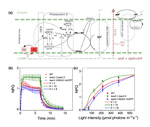
Seydoux C, Storti M, Giovagnetti V, Matuszyńska A, Guglielmino E, Zhao X, Giustini C, Pan Y, Blommaert L, Angulo J, Ruban A V, Hu H, Bailleul B, Courtois F, Allorent G and Finazzi G
Impaired photoprotection in Phaeodactylum tricornutum KEA3 mutants reveals the proton regulatory circuit of diatoms light acclimation - 2022 - New Phytol. 234(2):578-591 - https://doi.org/10.1111/nph.18003
Diatoms are successful phytoplankton clades able to acclimate to changing environmental conditions, including e.g. variable light intensity...
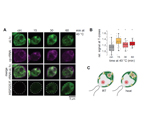
Trösch R, Ries F, Westrich LD, Gao Y, Herkt C, Hoppstädter J, Heck-Roth J, Mustas M, Scheuring D, Choquet Y, Räschle M, Zoschke R, Willmund F
Fast and global reorganization of the chloroplast protein biogenesis network during heat acclimation - 2022 - Plant Cell 24(3):1075–1099 - https://doi.org/10.1093/plcell/koab317
Photosynthesis is a central determinant of plant biomass production, but its homeostasis is increasingly challenged by heat. Little is known about the sensitive regulatory principles involved in heat acclimation that underly the biogenesis and repair of ...
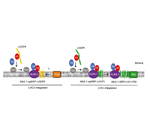
Rathod M K, Sreedhar N, Ozawa S-I, Kuroda H, Kodama N, Bujaldon S, Wollman F-A, Takahashi Y
Assembly Apparatus of Light-Harvesting Complexes; Identification of Alb3.1-cpSRP-LHCP Complexes in the Green Alga Chlamydomonas reinhardtii - 2022 - Plant Cell Physiol, 63(1):70-81 - https://doi.org/10.1093/pcp/pcab146
The unicellular green alga, Chlamydomonas reinhardtii, contains many light-harvesting complexes (LHCs) associating chlorophylls a/b and carotenoids; the major light-harvesting complexes, LHCIIs (types I,...
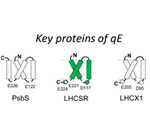
Giovagnetti V, Jaubert M, Shukla MK, Ungerer P, Bouly J-P, Falciatore A, Ruban AV
Biochemical and molecular properties of LHCX1, the essential regulator of dynamic photoprotection in diatoms - 2022 - Plant Physiol, 188(1):509-525 - https://doi.org/10.1093/plphys/kiab425
Light harvesting is regulated by a process triggered by the acidification of the thylakoid lumen, known as nonphotochemical "energy-dependent quenching" (qE). In diatoms, qE is controlled by the light-harv...
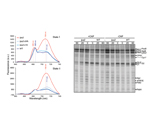
Spaniol B, Lang J, Venn B, Schake L, Sommer F, Mustas M, Geimer S, Wollman F-A, Choquet Y, Mühlhaus T, Schroda M
Complexome profiling on the Chlamydomonas lpa2 mutant reveals insights into PSII biogenesis and new PSII associated proteins - 2022 - J Exp Bot 73(1):245-262 - https://doi.org/10.1093/jxb/erab390
We have identified the homolog of LOW PSII ACCUMULATION 2 (LPA2) in Chlamydomonas. A Chlamydomonas lpa2 mutant grew slower in low light, was hypersensitive to...
Ouvrages 2022 :
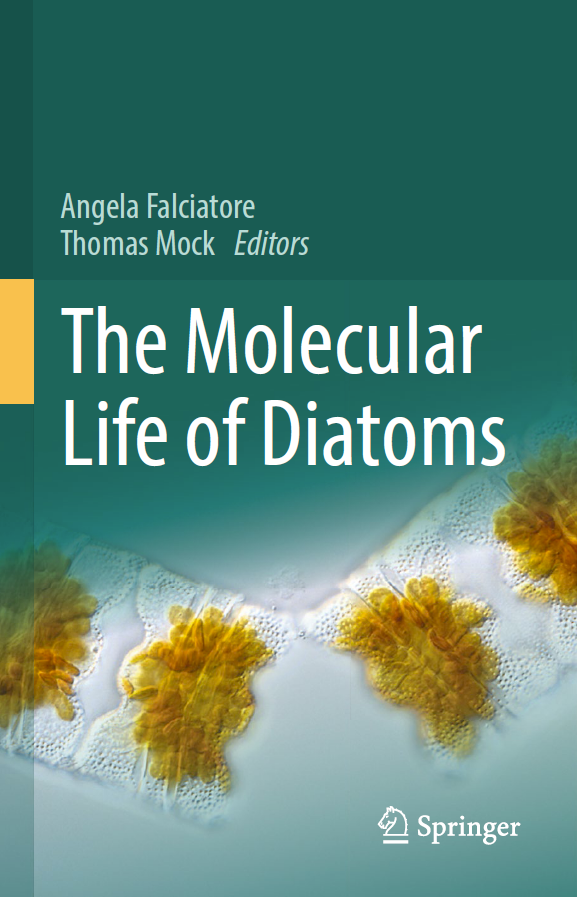 | Angela Falciatore, Thomas Mock (Eds.) 2022 | 1st ed. 2022 Springer International Publishing 978-3-030-92499-7 (ISBN) Comprehensive overview on diatom molecular biology Spans from diatom ecology and evolution, to genome editing in diatoms |
| Chapitres | |
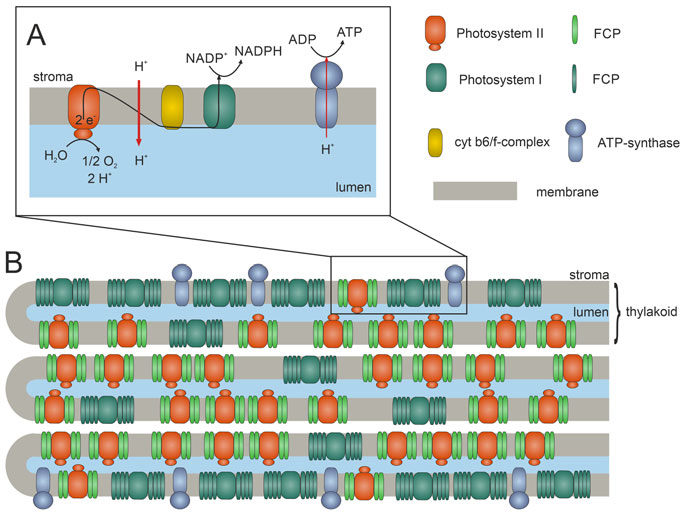 | Photosynthetic Light Reactions in Diatoms. I. The Lipids and Light-Harvesting Complexes of the Thylakoid Membrane Büchel C, Goss R, Bailleul B, Campbell D A, Lavaud J & Lepetit B pp 397-422 |
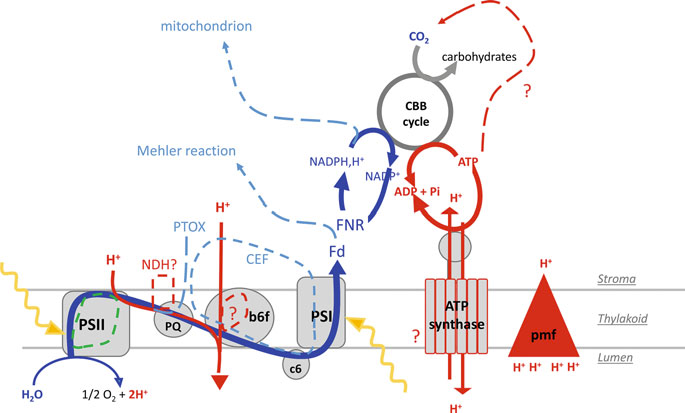 | Photosynthetic Light Reactions in Diatoms. II. The Dynamic Regulation of the Various Light Reactions Lepetit B, Campbell D A, Lavaud J, Büchel C, Goss R & Bailleul B pp 423-464 |
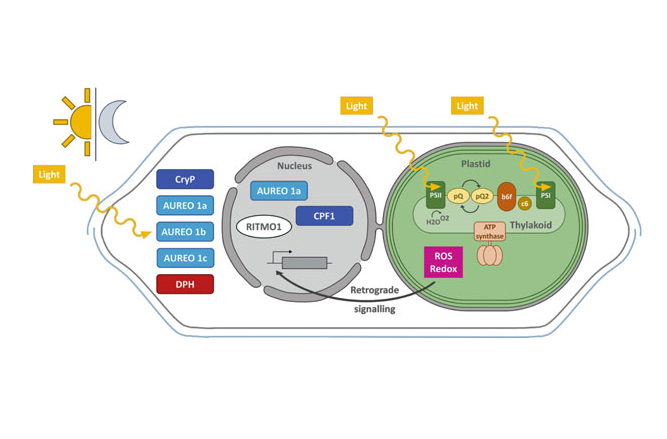 | Sensing and Signalling in Diatom Responses to Abiotic Cues Jaubert M, Duchêne C, Kroth P G, Rogato A, Bouly J-P & Falciatore A pp 607-639 |
2021
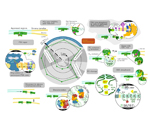
Nawrocki WJ, Liu X, Raber B, Hu C, de Vitry C, Bennett DIG, Croce R
Molecular origins of induction and loss of photoinhibition-related energy dissipation qI - 2021 - Sci Adv, 7(52):eabj0055 - https://doi.org/10.1126/sciadv.abj0055
Photosynthesis fuels life on Earth using sunlight as energy source. However, light has a simultaneous detrimental effect on the enzyme triggering photosynthesis and producing oxygen, photosystem II (PSII)...
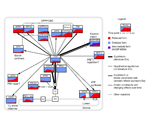
Zimmer D, Swart C, Graf A, Arrivault S, Tillich M, Proost S, Nikoloski Z, Stitt M, Bock R, Mühlhaus T, Boulouis A.
Topology of the redox network during induction of photosynthesis as revealed by time-resolved proteomics in tobacco - 2021 - Sci Adv 7(51):eabi8307 - https://doi.org/10.1126/sciadv.abi8307
Photosynthetically produced electrons provide energy for various metabolic pathways, including carbon reduction. Four Calvin-Benson cycle enzymes and several other plastid proteins are activated...
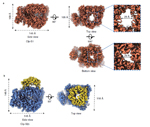
Wang N, Wang Y, Zhao Q, Zhang X, Peng C, Zhang W, Liu Y, Vallon O, Schroda M, Cong Y, Liu C
The cryo-EM structure of the chloroplast ClpP complex - 2021 - Nature plants, 7(11):1505–1515 - https://doi.org/10.1038/s41477-021-01020-x
Protein homoeostasis in plastids is strategically regulated by the protein quality control system involving multiple chaperones and proteases, among them the Clp protease...

Boussac A, Sellés J, Hamon M and Sugiura M
Properties of Photosystem II lacking the PsbJ subunit - 2021 - Photosynth Res - https://doi.org/10.1007/s11120-021-00880-w
Photosystem II (PSII), the oxygen-evolving enzyme, consists of 17 trans-membrane and 3 extrinsic membrane proteins. Other subunits bind to PSII during assembly, like Psb27, Psb28, and Tsl0063. The presence of Psb27 has been proposed to prevent the binding of PsbJ, a single transmembrane α-helix close to the quinone ...

Sayegh A, Perego L A, Arderiu Romero M, Escudero L, Delacotte J, Guille-Collignon M, Grimaud L, Bailleul B, Lemaître F
Finding Adapted Quinones for Harvesting Electrons from Photosynthetic Algae Suspensions - 2021 - Chem Electro Chem, 8(15):2968-2978 - https://doi.org/10.1002/celc.202100757
Performances of different quinones as redox mediators are investigated from suspensions of photosynthetic microalgae to produce photocurrents by using a miniaturized...
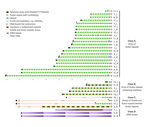
Chaux-Jukic F, O’Donnell S, Craig R J, Eberhard S, Vallon O, Xu Z
Architecture and evolution of subtelomeres in the unicellular green alga Chlamydomonas reinhardtii - 2021 - Nucleic Acids Res 49(13):7571–7587 - https://doi.org/10.1093/nar/gkab534
In most eukaryotes, subtelomeres are dynamic genomic regions populated by multi-copy sequences of different origins, which can promote segmental duplications and chromosomal rearrangements. However, their repetitive nature has complicated...
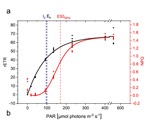
Blommaert L, Chafai L, Bailleul B
The fine-tuning of NPQ in diatoms relies on the regulation of both xanthophyll cycle enzymes - 2021 - Sci Rep. 11(1):12750 - https://doi.org/10.1038/s41598-021-91483-x
Diatoms possess an efficient mechanism to dissipate photons as heat in conditions of excess light, which is visualized as the Non-Photochemical Quenching of chlorophyll a fluorescence (NPQ)...
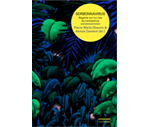
Catherine Jessus et Francis-André Wollman
Covid-19, un révélateur du hiatus entre logique politique et logique scientifique - 2021 - Sorbonnavirus. Regards sur la crise du coronavirus, par Pierre-Marie Chauvin et Annick Clement, Sorbonne Université Presses, p 305-317 - https://www.sorbonne-universite.fr/parutions/sorbonnavirus
Comment réinventer les rapports entre politique et science? Le temps politique et le temps scientifique sont pris dans la logique contradictoire : exigence de résultats rapides vs respect du temps nécessaire à la découverte scientifique...
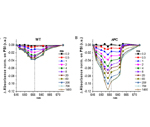
Viola S, Sellés J,Bailleul B, Joliot P, Wollman F-A
In vivo electron donation from plastocyanin and cytochrome c6 to PSI in Synechocystis sp. PCC6803 - 2021 - BBA 1862(9):148449 - https://doi.org/10.1016/j.bbabio.2021.148449
Many cyanobacteria species can use both plastocyanin and cytochrome c6 as lumenal electron carriers to shuttle electrons from the cytochrome b6f to either photosystem I or the respiratory cytochrome c oxidase....
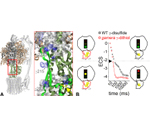
Buchert F, Bailleul B, Joliot P
Disentangling chloroplast ATP synthase regulation by proton motive force and thiol modulation in Arabidopsis leaves - 2021 - BBA, 1862(8):148434 - https://doi.org/10.1016/j.bbabio.2021.148434
The chloroplast ATP synthase (CF1Fo) contains a specific feature to the green lineage: a γ-subunit redox domain that contains a cysteine couple which interacts with the torque-transmitting βDELSEED-loop...
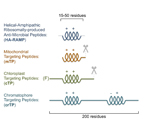
Caspari O D and Lafontaine I
The role of antimicrobial peptides in the evolution of endosymbiotic protein import - 2021 - PLoS Pathog 17(4):e1009466 - https://doi.org/10.1371/journal.ppat.1009466
Antimicrobial peptides (AMPs) represent an ancient mechanism for antagonizing microbial opponents, being generated by eukaryotes, eubacteria, and archaea alike1,2]. Given the dearth in new antibiotics, there has been increasing interest in AMPs...
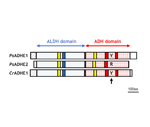
van Lis R, Couté Y, Brugière S, Tourasse NJ, Laurent B, Nitschke W, Vallon O, Atteia A.
Phylogenetic and functional diversity of aldehyde-alcohol dehydrogenases in microalgae - 2021 - Plant Mol Biol. 105(4-5):497-511 - https://doi.org/10.1007/s11103-020-01105-9
The study shows the biochemical and enzymatic divergence between the two aldehyde-alcohol dehydrogenases of the alga Polytomella sp., shedding light on novel aspects of the enzyme evolution amid unicellular eukaryotes. Aldehyde-alcohol dehydrogenases (ADHEs)...

Petrova O N, Yoo B-K, Lamarre I, Sellés J, Nioche P and Negrerie M
Ultrafast dynamics of heme distortion in the O2-sensor of a thermophilic anaerobe bacterium - 2021 - Commun Chem 4, 31 - https://doi.org/10.1038/s42004-021-00471-9
Heme-Nitric oxide and Oxygen binding protein domains (H-NOX) are found in signaling pathways of both prokaryotes and eukaryotes and share sequence homology with soluble guanylate cyclase, the mammalian NO receptor...
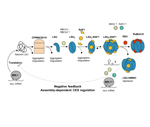
Wietrzynski W, Traverso E, Wollman F-A, Wostrikoff K
The state of oligomerization of Rubisco controls the rate of synthesis of the Rubisco large subunit in Chlamydomonas reinhardtii - 2021 - The Plant Cell, 33(5):1706-1727 - https://doi.org/10.1093/plcell/koab061
Ribulose 1,5-bisphosphate Carboxylase/Oxygenase (Rubisco) is present in all photosynthetic organisms and is a key enzyme for photosynthesis-driven life on Earth. Its most prominent form is a hetero-oligomer in which small subunits (SSU) stabilize the core of the enzyme built from large subunits (LSU), ...
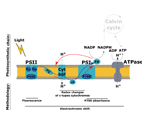
Long M, Peltekis A, González-Fernández C, Hégaret H and Bailleul B
Allelochemicals of Alexandrium minutum: Kinetics of membrane disruption and photosynthesis inhibition in a co-occurring diatom - 2021 - Harmful Algae, 103:101997 - https://doi.org/10.1016/j.hal.2021.101997
Allelopathy is an efficient strategy by which some microalgae can outcompete other species. Allelochemicals from the toxic dinoflagellate Alexandrium minutum have deleterious effects ...

Sugiura M, Taniguchi T, Tango N, Nakamura M, Sellés J and Boussac A
Probing the role of arginine 323 of the D1 protein in photosystem II function - 2021 - Physiol Plantarum, 171(2): 183-199 - https://doi.org/10.1111/ppl.13115
The Mn4CaO5 cluster of photosystem II (PSII) advances sequentially through five oxidation states (S0 to S4). Under the enzyme cycle, two water molecules are oxidized, O2 is generated and four protons are released into the lumen...
2020
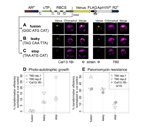
Caspari O D
Introduction of a leaky stop codon as molecular tool in Chlamydomonas reinhardtii - 2020 - PLoS ONE, 15(8): e0237405 - https://doi.org/10.1371/journal.pone.0237405
Expression of proteins in the chloroplast or mitochondria of the model green alga Chlamydomonas reinhardtii can be achieved by directly inserting transgenes into organellar genomes, or through nuclear expression and post-translational import. A number of tools have been developed in the literature for achieving high...
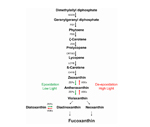
Manfellotto F, Stella GR, Falciatore A, Brunet C, Ferrante MI
Engineering the Unicellular Alga Phaeodactylum tricornutum for Enhancing Carotenoid Production - 2020 - Antioxidants, 9(8):757 - https://doi.org/10.3390/antiox9080757
Microalgae represent a promising resource for the production of beneficial natural compounds due to their richness in secondary metabolites and easy cultivation. Carotenoids feature among distinctive compounds of many microalgae, including diatoms, which owe their golden color to the xanthophyll fucoxanthin...
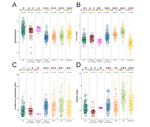
Garrido C, Caspari O D, Choquet Y, Wollman F-A and Lafontaine I
Evidence Supporting an Antimicrobial Origin of Targeting Peptides to Endosymbiotic Organelles - 2020 - Cells, 9(8),1795 - https://doi.org/10.3390/cells9081795
Mitochondria and chloroplasts emerged from primary endosymbiosis. Most proteins of the endosymbiont were subsequently expressed in the nucleo-cytosol of the host and organelle-targeted via the acquisition of N-terminal presequences, whose evolutionary origin remains enigmatic....
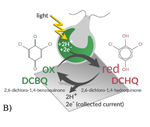
Beauzamy L, Delacotte J, Bailleul B, Tanaka K, Nakanishi S, Wollman F-A, Lemaître F
Mediator-Microorganism Interaction in Microbial Solar Cell: a Fluo-Electrochemical Insight - 2020 - Anal Chem, 92(11):7532-7539 - https://doi.org/10.1021/acs.analchem.9b05808
Microbial solar cells that mainly rely on the use of photosynthesic organisms are a promising alternative to photovoltaics for solar electricity production. In that way, we propose a new approach...
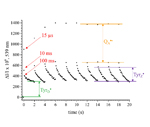
Boussac A, Sellés J, Sugiura M
What can we still learn from the electrochromic band-shifts in Photosystem II? - 2020 - BBA, 1861(5–6):148176 - https://doi.org/10.1016/j.bbabio.2020.148176
Electrochromic band-shifts have been investigated in Photosystem II (PSII) from Thermosynechoccocus elongatus. Firstly, by using Mn-depleted PsbA1-PSII and PsbA3-PSII in which the QX absorption of PheD1 differs, a band-shift in the QX region of PheD2...
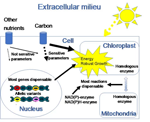
Lavoie M, Saint-Béat B, Strauss J, Guérin S, Allard A, Hardy S V, Falciatore A and Lavaud J
Genome-Scale Metabolic Reconstruction and in Silico Perturbation Analysis of the Polar Diatom Fragilariopsis cylindrus Predicts High Metabolic Robustness - 2020 - Biology, 9(2):30 - https://www.mdpi.com/2079-7737/9/2/30
Diatoms are major primary producers in polar environments where they can actively grow under extremely variable conditions. Integrative modeling using a genome-scale model (GSM) is a powerful approach to decipher the complex interactions between components of diatom...
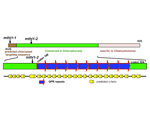
Ozawa S, Cavaiuolo M, Jarrige D, Kuras R, Rutgers M, Eberhard S, Drapier D, Wollman F-A, Choquet Y
The OPR Protein MTHI1 Controls the Expression of Two Different Subunits of ATP Synthase CFo in Chlamydomonas reinhardtii - 2020 - Plant Cell, 32(4):1179-1203 - https://doi.org/10.1105/tpc.19.00770
In Chlamydomonas reinhardtii, chloroplast gene expression is tightly regulated post-transcriptionally by gene-specific trans-acting protein factors. Here we report the identification of an OctotricoPeptide Repeat (OPR) protein, MDH1, critical for the biogenesis of chloroplast ATP synthase CF0....
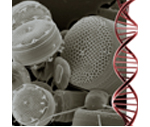
Falciatore A, Jaubert M, Bouly J-P, Bailleul B, Mock T
Diatom Molecular Research Comes of Age: Model Species for Studying Phytoplankton Biology and Diversity - 2020 - Plant Cell, 32(3):547-572 - https://doi.org/10.1105/tpc.19.00158
Diatoms are the most diverse group of algae with at least 100,000 species. Contributing approximately 20% of annual global carbon fixation, they underpin major aquatic food webs and drive global biogeochemical cycles...
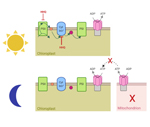
Dow L, Stock F, Peltekis A, Szamosvári D, Prothiwa M, Lapointe A, Böttcher T, Bailleul B, Vyverman W, Kroth PG, Lepetit B
The multifaceted inhibitory effects of an alkyl quinolone on the diatom Phaeodactylum tricornutum - 2020 - Chembiochem 21(8):1206-1216 - https://doi.org/10.1002/cbic.201900612
The mechanisms underlying interactions between diatoms and bacteria are crucial to understand diatom behaviour and proliferation, and can result in far-reaching ecological consequences. Recently, 2-alkyl-4-quinolones have been isolated...
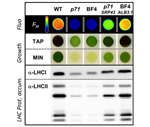
Bujaldon S, Kodama N, Rathod M K, Tourasse N, Ozawa S-I, Sellés J, Vallon O, Takahashi Y, Wollman F-A
The BF4 and p71 antenna mutants from Chlamydomonas reinhardtii - 2020 - Biochim Biophys Acta, 1861(4):148085 - https://doi.org/10.1016/j.bbabio.2019.148085
Two pale green mutants of the green alga Chlamydomonas reinhardtii, which have been used over the years in many photosynthesis studies, the BF4 and p71 mutants, were characterized and their mutated gene identified in the nuclear genome...
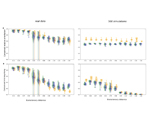
Gilet J, Conte R, Torchet C, Benard L and Lafontaine I
Additional layer of regulation via convergent gene orientation in yeasts - 2020 - Mol Biol Evol, 37(2):365-378 - https://doi.org/10.1093/molbev/msz221
Convergent gene pairs can produce transcripts with complementary sequences. We had shown that mRNA duplexes form in vivo in Saccharomyces cerevisiae via interactions of mRNA overlapping 3’-ends and can lead to post-transcriptional regulatory events. ...
2019
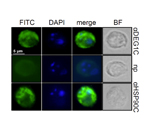
Theis J, Lang J, Spaniol B, Ferté S, Niemeyer J, Sommer F K, Zimmer D, Venn B, Mehr S F, Mühlhaus T, Wollman F-A, Schroda M
The Chlamydomonas deg1c mutant accumulates proteins involved in high light acclimation - 2019 - Plant Physiol, 181(4):1480-1497 - https://doi.org/10.1104/pp.19.01052
Degradation of periplasmic proteins (Deg)/high temperature requirement A (HtrA) proteases are ATP-independent serine endopeptidases that perform key aspects of protein quality control in all domains of life. Here, we characterized...
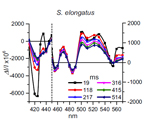
Viola S, Bailleul B, Yu J, Nixon P, Sellés J, Joliot P and Wollman F-A
Probing the electric field across thylakoid membranes in cyanobacteria - 2019 - PNAS, 116(43):21900-21906 - https://doi.org/10.1073/pnas.1913099116
In plants, algae, and some photosynthetic bacteria, the ElectroChromic Shift (ECS) of photosynthetic pigments, which senses the electric field across photosynthetic membranes, is widely used to quantify the activity of the photosynthetic chain. In cyanobacteria, ECS signals...
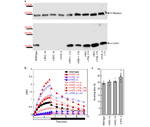
Buck JM, Sherman J, Bártulos CR, Serif M, Halder M, Henkel J, Falciatore A, Lavaud J, Gorbunov MY, Kroth PG, Falkowski PG, Lepetit B.
Lhcx proteins provide photoprotection via thermal dissipation of absorbed light in the diatom Phaeodactylum tricornutum. - 2019 - Nat Commun, 10(1):4167 - https://doi.org/10.1038/s41467-019-12043-6
Diatoms possess an impressive capacity for rapidly inducible thermal dissipation of excess absorbed energy (qE), provided by the xanthophyll diatoxanthin and Lhcx proteins. By knocking out the Lhcx1 and Lhcx2 genes...
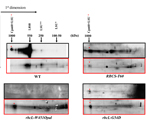
Majeran W, Wostrikoff K, Wollman F-A and Vallon O
Role of ClpP in the Biogenesis and Degradation of RuBisCO and ATP Synthase in Chlamydomonas reinhardtii - 2019 - Plants, 8(7) - http://dx.doi.org/10.3390/plants8070191
Ribulose 1,5-bisphosphate carboxylase/oxygenase (RuBisCO) associates a chloroplast- and a nucleus-encoded subunit (LSU and SSU). It constitutes the major entry point of inorganic carbon into the biosphere as it catalyzes photosynthetic CO2 fixation...
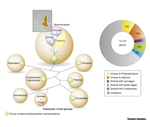
Bowler C. and Falciatore A
Phaeodactylum tricornutum - 2019 - Trends in Genetics. 35(9):706-707. - https://doi.org/10.1016/j.tig.2019.05.007
Diatoms, key photosynthetic micro-eukaryotes, found in all aquatic ecosystems are classified based on their symmetry into pennates (elongated) and centrics (radial symmetry). Phaeodactylum tricornutum is a marine pennate species that has become an experimental model used to understand diatom biology...
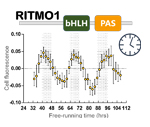
Annunziata R, Ritter A, Fortunato A E, Manzotti A, Cheminant-Navarro S, Agier N, Huysman M J J, Wing P, Bones A, Bouget F-Y, Cosentino Lagomarsino M, Bouly J-P and Falciatore A
bHLH-PAS protein RITMO1 regulates diel biological rhythms in the marine diatom Phaeodactylum tricornutum - 2019 - PNAS, 116(26):13137-13142 - https://doi.org/10.1073/pnas.1819660116
Periodic light–dark cycles govern the timing of basic biological processes in organisms inhabiting land as well as the sea...
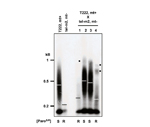
Eberhard S, Valuchova S, Ravat J, Fulnev cek J, Jolivet P, Bujaldon S, Lemaire S D, Wollman F-A, Teixeira M T, Riha K and Xu Z
Molecular characterization of Chlamydomonas reinhardtii telomeres and telomerase mutants - 2019 - Life Science Alliance, 2(3) - http://doi.org/10.26508/lsa.201900315
Telomeres are repeated sequences found at the end of the linear chromosomes of most eukaryotes and are required for chromosome integrity. Expression of the reverse-transcriptase telomerase allows for extension of telomeric...

Sayegh A, Longatte G, Buriez O, Wollman F-A, Guille-Collignon M, Labbé E, Delacotte J and Lemaître F
Diverting photosynthetic electrons from suspensions of Chlamydomonas reinhardtii algae - New insights using an electrochemical well device - 2019 - Electrochimica Acta, 304:465-473 - https://doi.org/10.1016/j.electacta.2019.02.105
n the last years, many strategies have been developed to benefit from oxygenic photosynthesis in the present context of renewable energies. To achieve this, bioelectricity may be produced by using photosynthetic components...
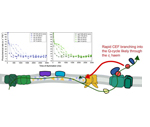
Nawrocki W, Bailleul B, Cardol P, Rappaport F, Wollman F-A and Joliot P
Maximal cyclic electron flow rate is independent of PGRL1 in Chlamydomonas - 2019 - Biochim Biophys Acta, 1860(5):425-432 - https://doi.org/10.1016/j.bbabio.2019.01.004
Cyclic electron flow (CEF) is defined as a return of the reductants from the acceptor side of Photosystem I (PSI) to the pool of its donors via the cytochrome b6f. It is described to be complementary to the linear electron flow and essential for photosynthesis...
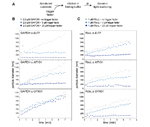
Rohr M, Ries F, Herkt C, Gotsmann VL, Westrich LD, Gries K, Trösch R, Christmann J, Chaux F, Jung M, Zimmer D, Mühlhaus T, Sommer FK, Schroda M, Keller S, Möhlmann T, Willmund F
The role of plastidic trigger factor serving protein biogenesis in green algae and land plants - 2019 - Plant Physiol, 179:1093-1100 - https://doi.org/10.1104/pp.18.01252
Biochemical processes in chloroplasts are important for virtually all life forms. Tight regulation of protein homeostasis and the
coordinated...
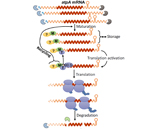
Viola S, Cavaiuolo M, Drapier D, Eberhard S, Vallon O, Wollman F-A and Choquet Y
MDA1, a nucleus‐encoded factor involved in the stabilization and processing of the atpA transcript in the chloroplast of Chlamydomonas - 2019 - Plant J, 98(6):1033–1047 - https://doi.org/10.1111/tpj.14300
In Chlamydomonas reinhardtii, chloroplast gene expression is tightly regulated post‐transcriptionally by gene‐specific trans‐acting protein factors. Here, we report the molecular identification of an OctotricoPeptide Repeat (OPR) protein, MDA1, which governs the maturation and accumulation of the atpA transcript, ...
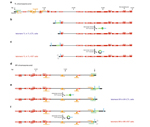
Jolivet P, Serhal K, Graf M, Eberhard S, Xu Z, Luke B and Teixeira M T
A subtelomeric region affects telomerase-negative replicative senescence in Saccharomyces cerevisiae - 2019 - Scientific Reports, 9(1):1845 - https://doi.org/10.1038/s41598-018-38000-9
In eukaryotes, telomeres determine cell proliferation potential by triggering replicative senescence in the absence of telomerase. In Saccharomyces cerevisiae, senescence is mainly dictated by the first telomere that reaches a critically short length, activating a DNA-damage-like response...
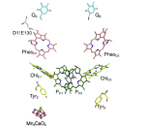
Takegawa Y, Nakamura M, Nakamura S, Noguchi T, Sellés J, Rutherford A W, Boussac A and Sugiura M
New insights on ChlD1 function in Photosystem II from site-directed mutants of D1/T179 in Thermosynechococcus elongatus - 2019 - Biochim Biophys Acta, 1860(4):297-309 - https://doi.org/10.1016/j.bbabio.2019.01.008
The monomeric chlorophyll, ChlD1, which is located between the PD1PD2 chlorophyll pair and the pheophytin, PheoD1, is the longest wavelength chlorophyll in the heart of Photosystem II and is thought to be the primary electron donor. Its central Mg2+ is liganded to a water molecule...
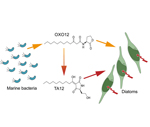
Stock F, Syrpas M, Graff van Creveld S, Backx S, Blommaert L, Dow L, Stock W, Ruysbergh E, Lepetit B, Bailleul B, Sabbe K, De Kimpe N, Willems A, Kroth P G, Vardi A, Vyverman W and Mangelinckx S
N-Acyl Homoserine Lactone Derived Tetramic Acids Impair Photosynthesis in Phaeodactylum tricornutum - 2019 - ACS Chem. Biol, 14(2):198-203 - https://doi.org/10.1021/acschembio.8b01101
Marine bacteria contribute substantially to nutrient cycling in the oceans and can engage in close interactions with microalgae. Many microalgae...
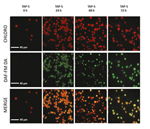
De Mia M, Lemaire S D, Choquet Y and Wollman F-A
Nitric Oxide Remodels the Photosynthetic Apparatus upon S-Starvation in Chlamydomonas reinhardtii - 2019 - Plant Physiol, 179(2):718-731 - https://doi.org/10.1104/pp.18.01164
Many photosynthetic autotrophs have evolved responses that adjust their metabolism to limitations in nutrient availability. Here we report a detailed characterization of the remodeling of photosynthesis upon sulfur starvation under heterotrophy and photo-autotrophy in the green alga (Chlamydomonas reinhardtii)....
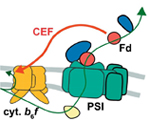
Nawrocki W, Bailleul B, Picot D, Cardol P, Rappaport F, Wollman F-A and Joliot P
The mechanism of cyclic electron flow - 2019 - Biochim Biophys Acta 1860(5):433-438 - https://doi.org/10.1016/j.bbabio.2018.12.005
Apart from the canonical light-driven linear electron flow (LEF) from water to CO2, numerous regulatory and alternative electron transfer pathways exist in chloroplasts. One of them is the cyclic electron flow around Photosystem I (CEF), contributing to photoprotection of both Photosystem I and II (PSI, PSII)...
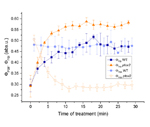
Nawrocki W J, Buchert F, Joliot P, Rappaport F, Bailleul B and Wollman F-A
Chlororespiration controls growth under intermittent light - 2019 - Plant Physiol, 179(2):630-639 - https://doi.org/10.1104/pp.18.01213
Whereas photosynthetic function under steady-state light conditions has been well characterized, little is known about its changes that occur in response to light fluctuations. Chlororespiration, a simplified respiratory chain, is widespread across all photosynthetic lineages, but its role remains elusive. Here, we show that chlororespiration plays a crucial...
